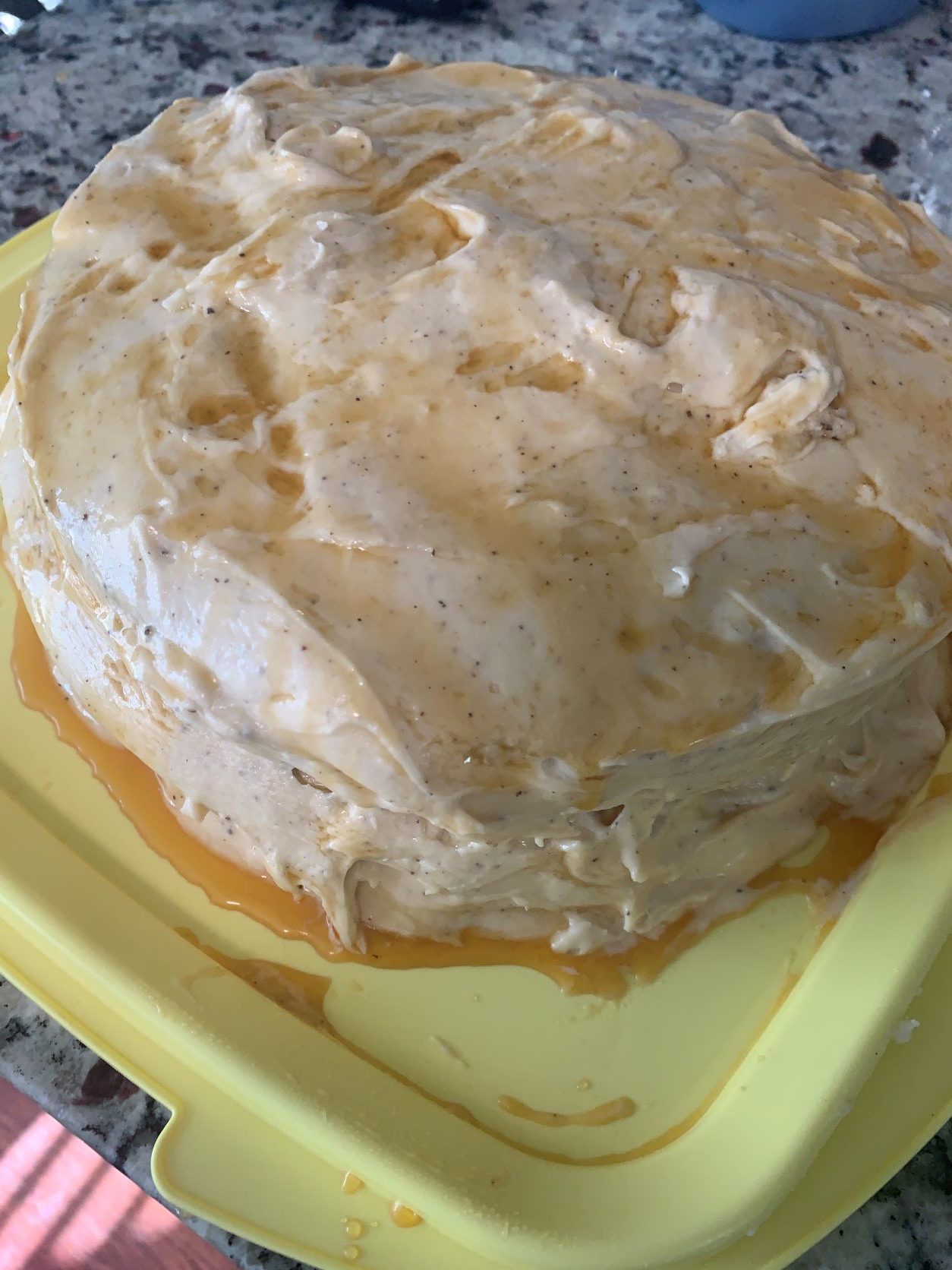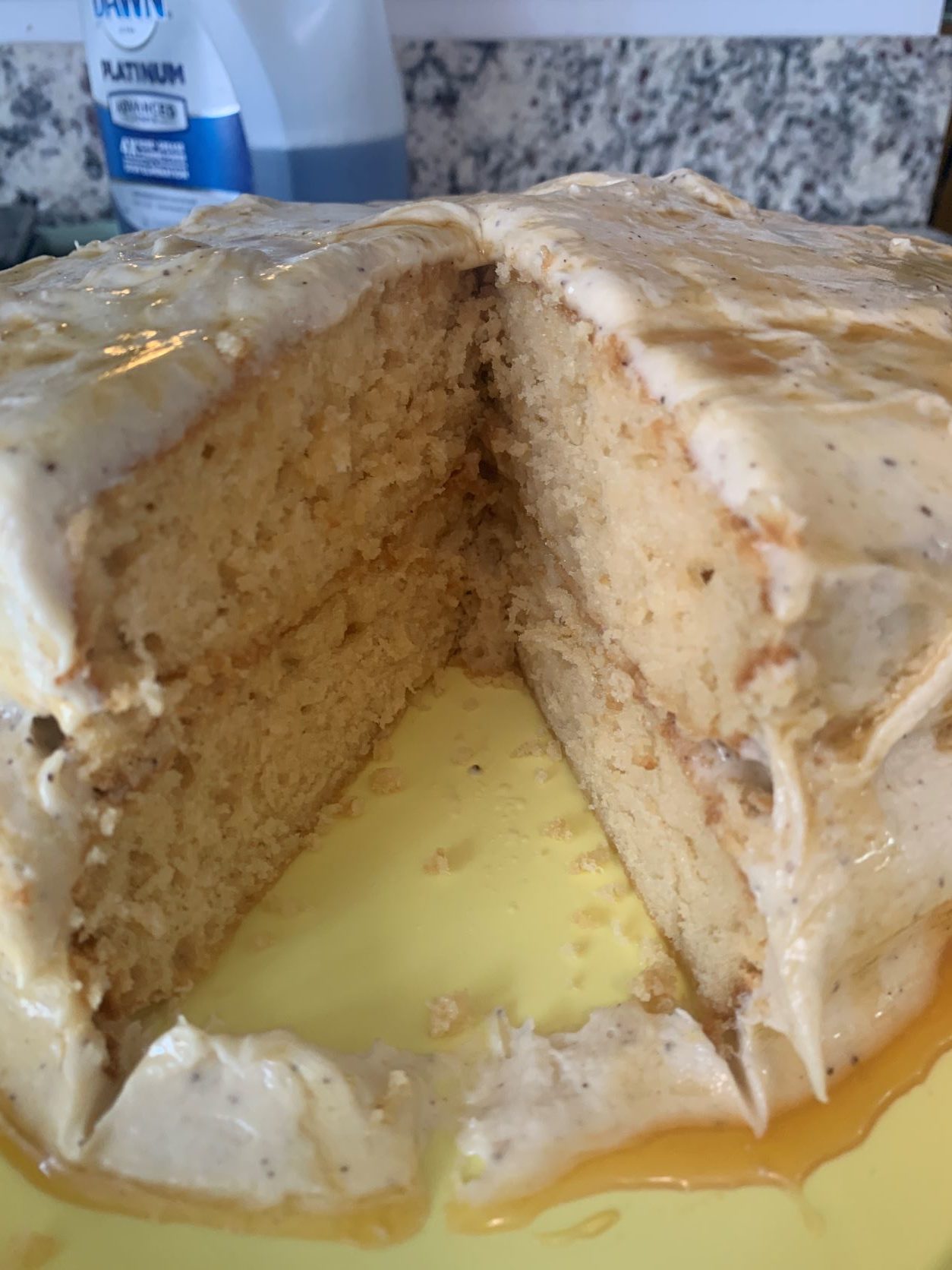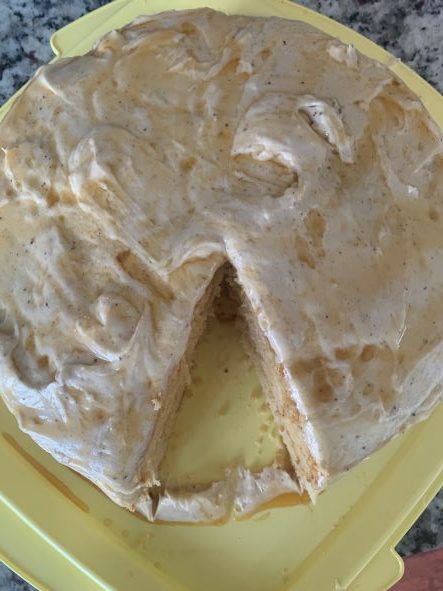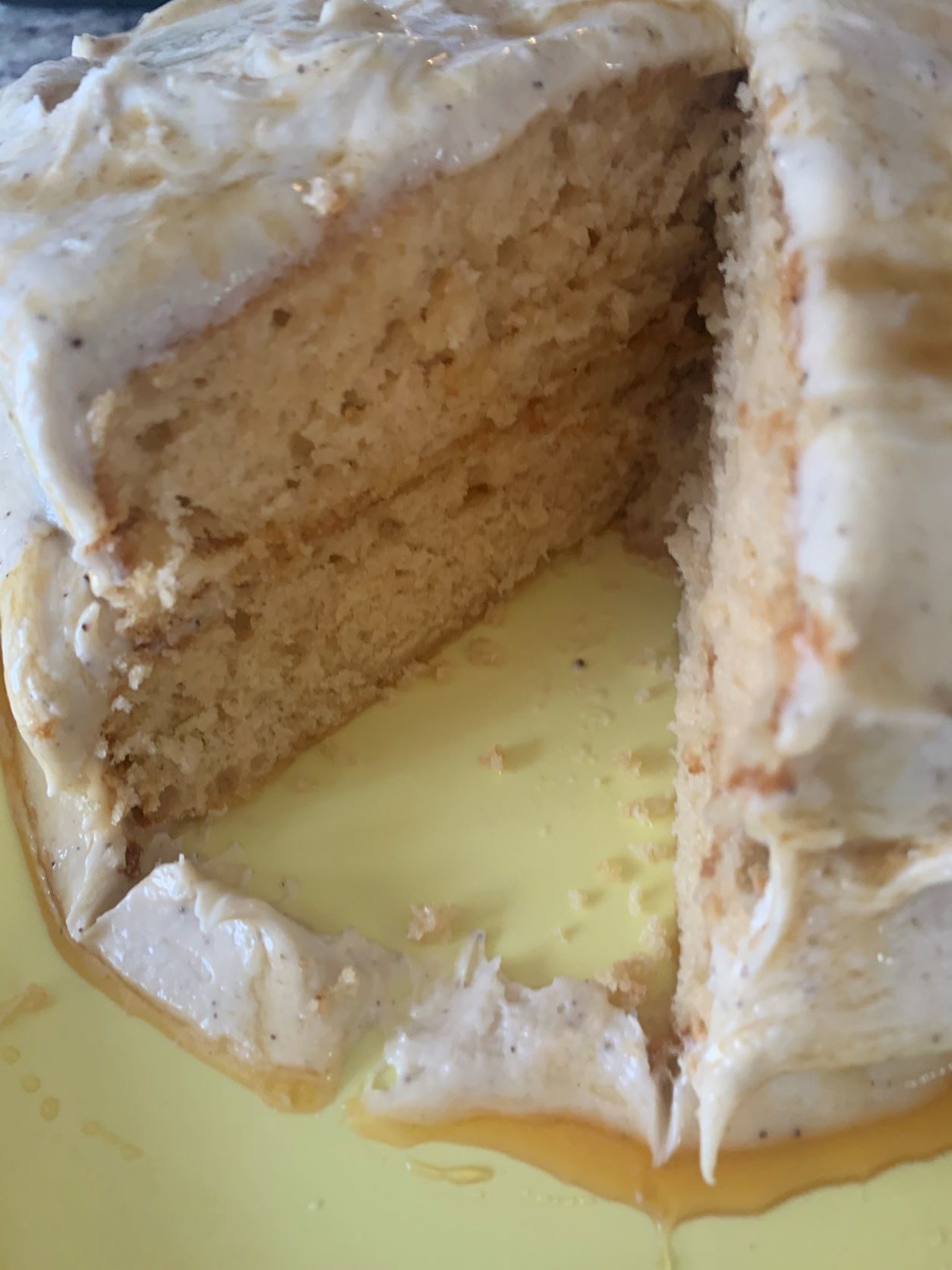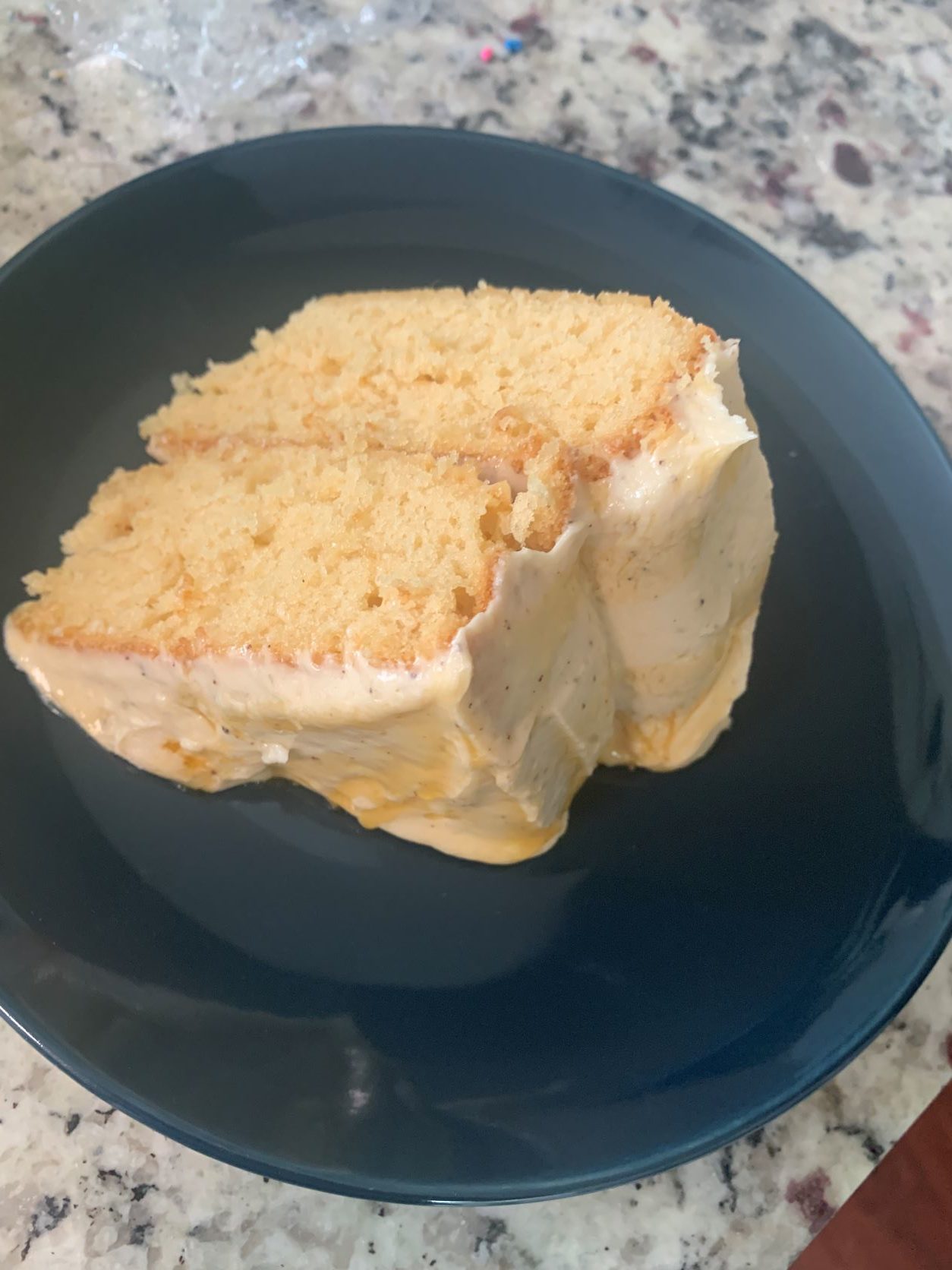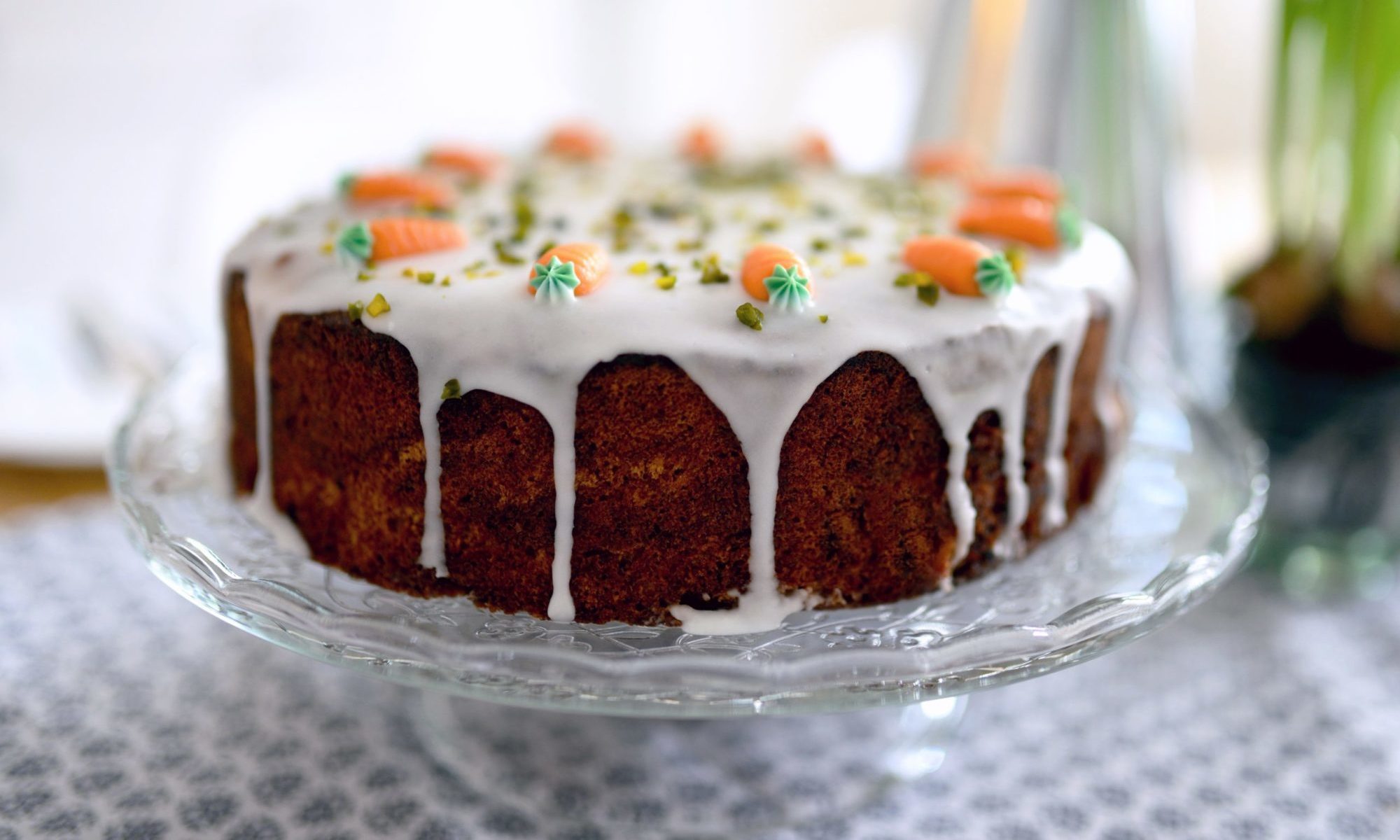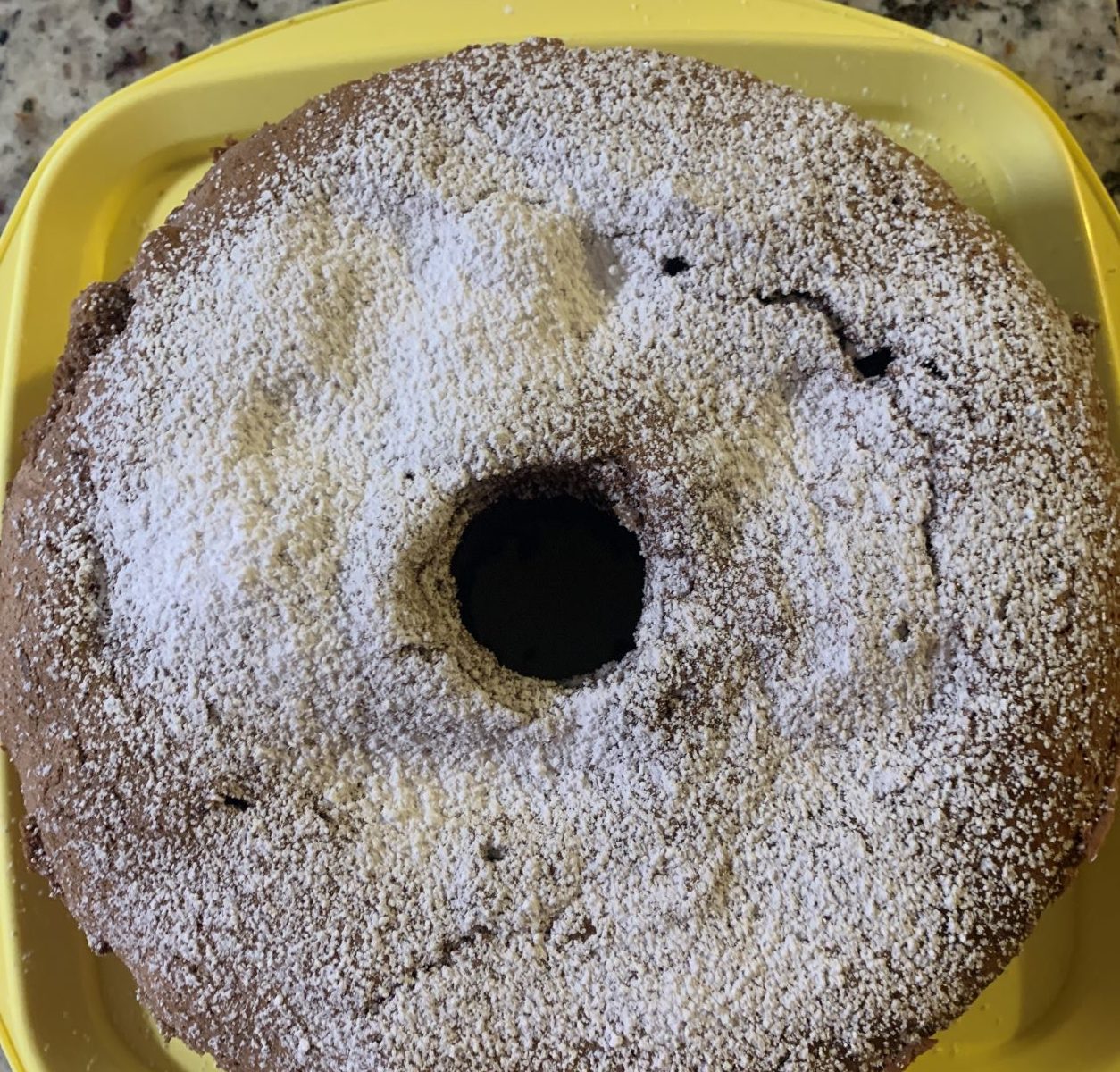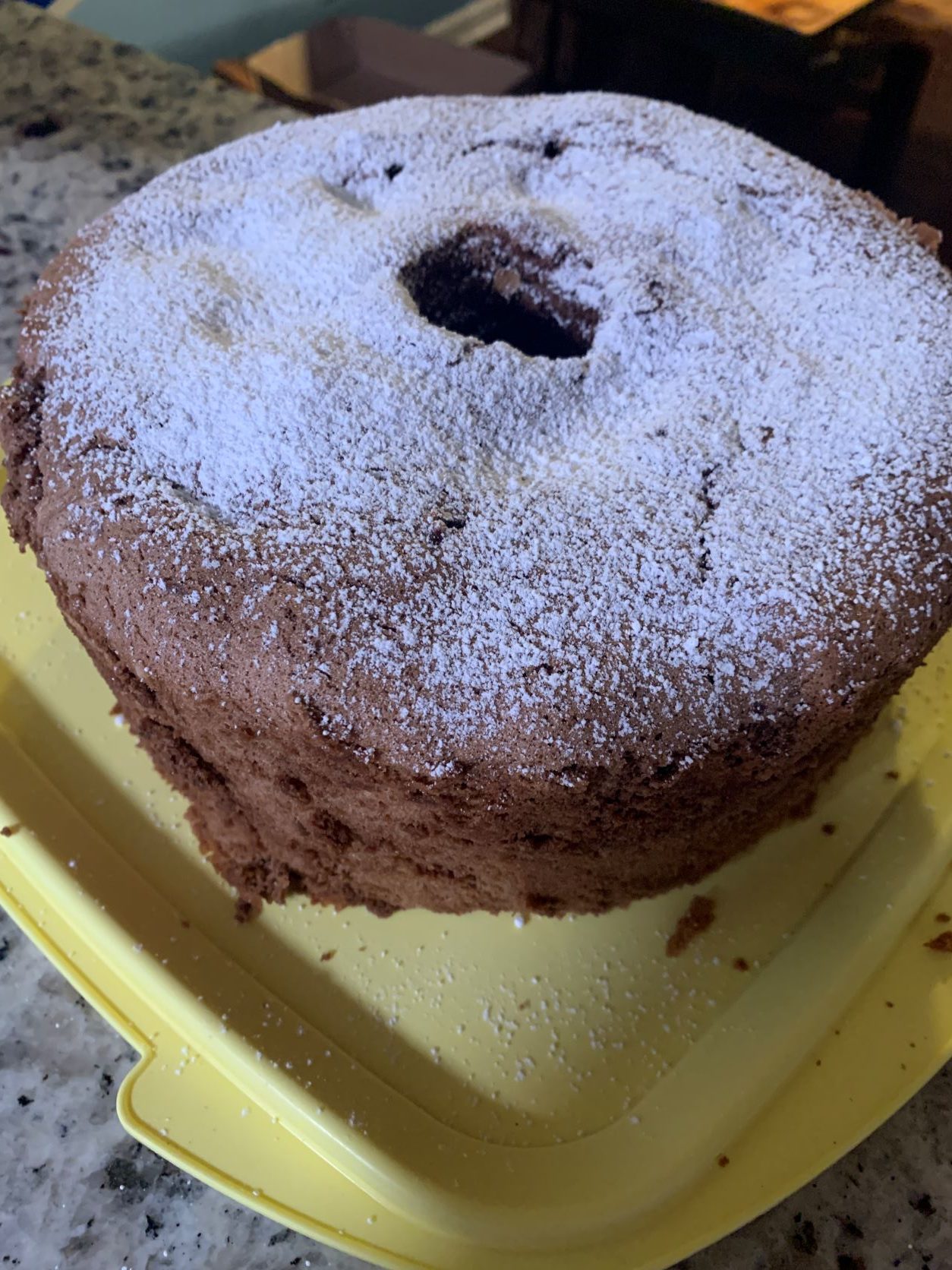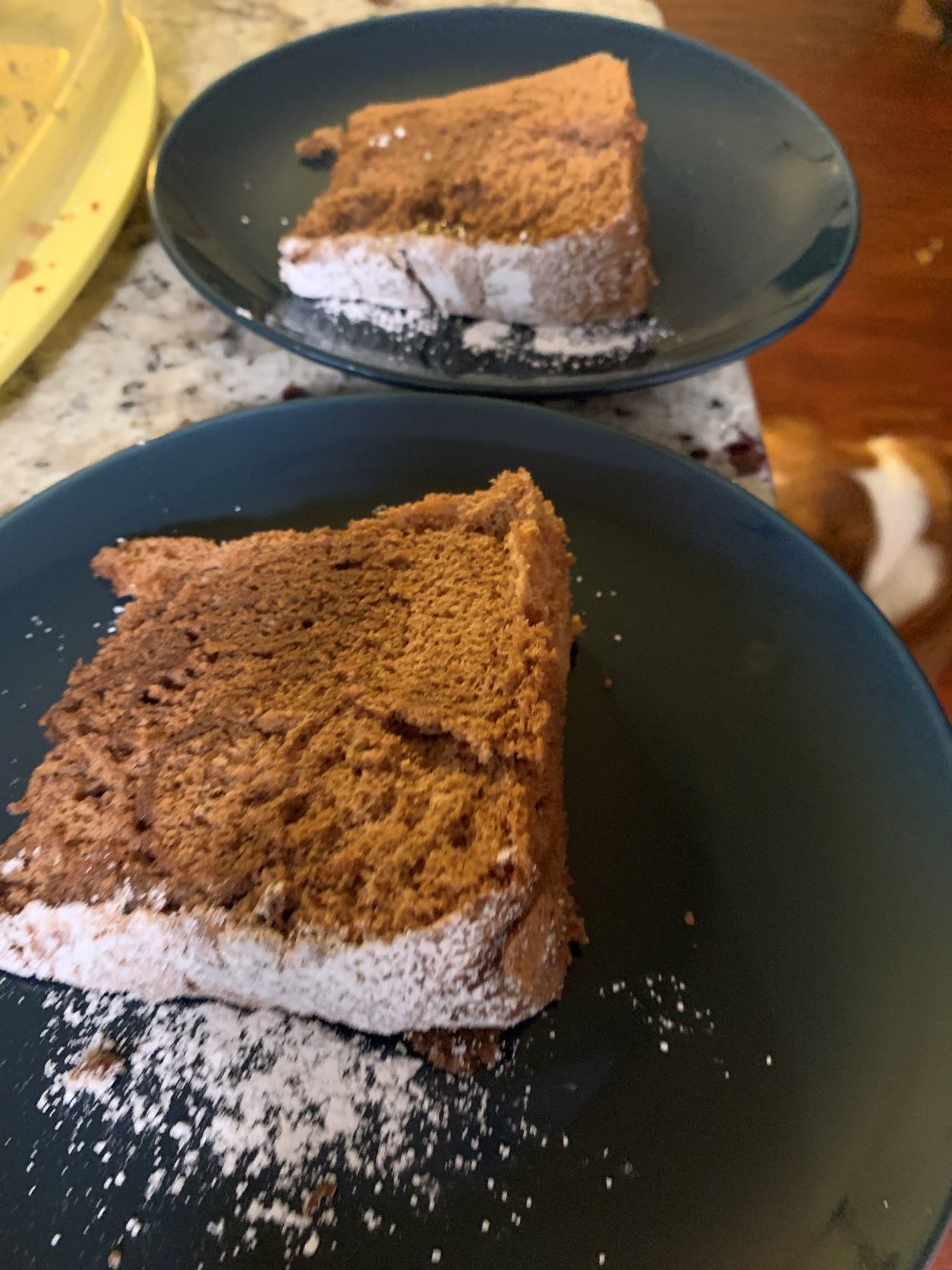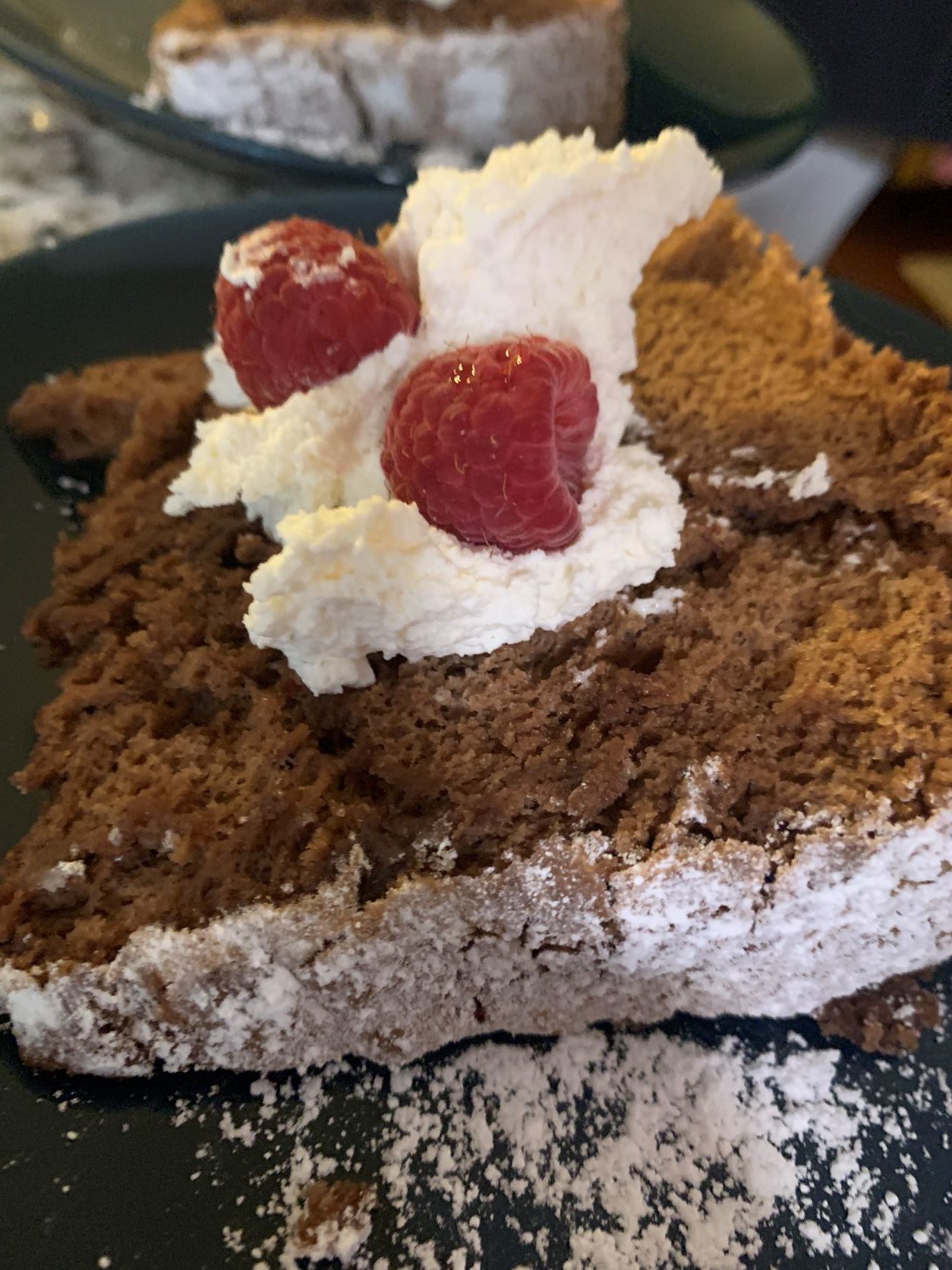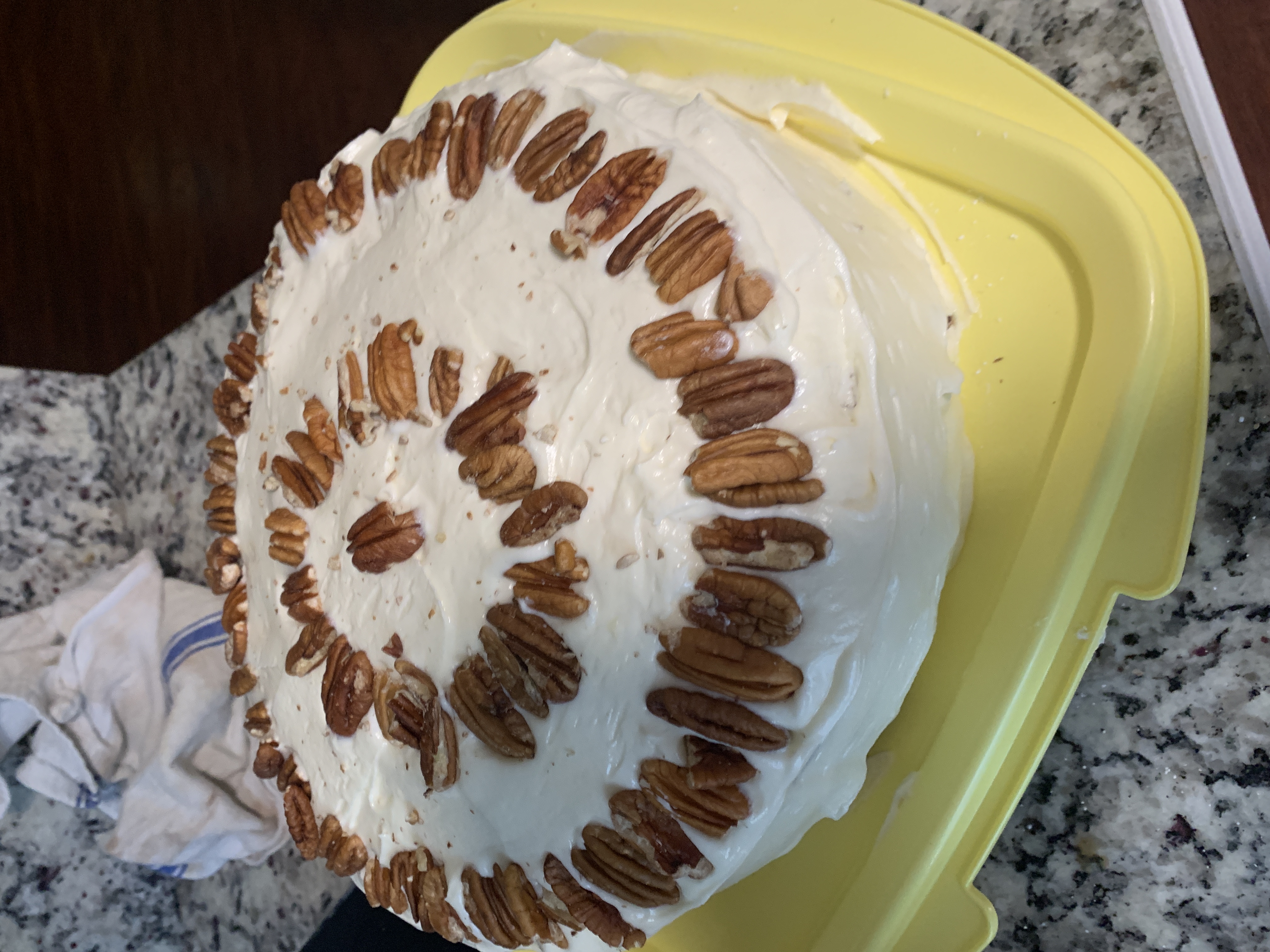Could it be? Could it be that I actually made an honest-to-betsy Southern cake with a real life Southern pedigree? It seems so! The caramel cake is a southern classic with a capital C. Most authors agree that it is a staple of Southern cooking, with particular praise going to the Mississippi delta for its love of this cake. That being said, there is no classic recipe for this old favorite. Everybody’s grandma has there way of doing it, and everybody who makes it these days just can’t quite do it as well as they used to (at least that’s what all the blogs say). But I have a colleague who loves caramel cake, and I wanted to get this in before they left on summer vacation.
So what is caramel cake? It is a basic yellow cake, usually 2-3 layers, with a caramel frosting. The frosting is typically (though not always) a boiled frosting that sets into a hardened shell upon cooling to room temperature. So where did I begin? With tragedy.

Like a good cultural connoisseur, I didn’t want to get caught with just a single source for all my Southern baking. But like a bad librarian, I didn’t think to stick with my trusted sources. I abandoned Southern Living for Cheryl Day’s A Treasury of Southern Baking where I attempted to make the caramel cake recipe and the accompanying frosting.
Reader, I tell you, the recipe was the problem.
You see, the cookbook author told me to stir the caramel frequently, but she did not say how many Great American Rescue Dog Show contestants I could watch between stirring. She also neglected to mention how hot my stove was or the relative weakness of the cake when I was trying to balance it on my arm upside down. Okay, between you and me, maybe the recipe wasn’t the problem. I was off my game, and I have the tragic results to show for it.
It takes forever to make caramel. When I had come back for the 20th time to stir it, it had gone over and just started to scorch. I hated to poor all that effort down the drain, so I forced the icing through a sieve to remove the charred bit. After testing the flavor, it was okay to use. I tried to ice the cakes, but having such a high temperature meant that a lot of my liquid had evaporated, so I was left with about half the icing I needed. Add this to a recipe that said to butter but not parchment line my pans (always line them with parchment, you fool!), and it was a recipe for disaster. You can see the results below. It tasted fine. Pretty good actually. But we would have to be really close friends for me to serve you this cake.

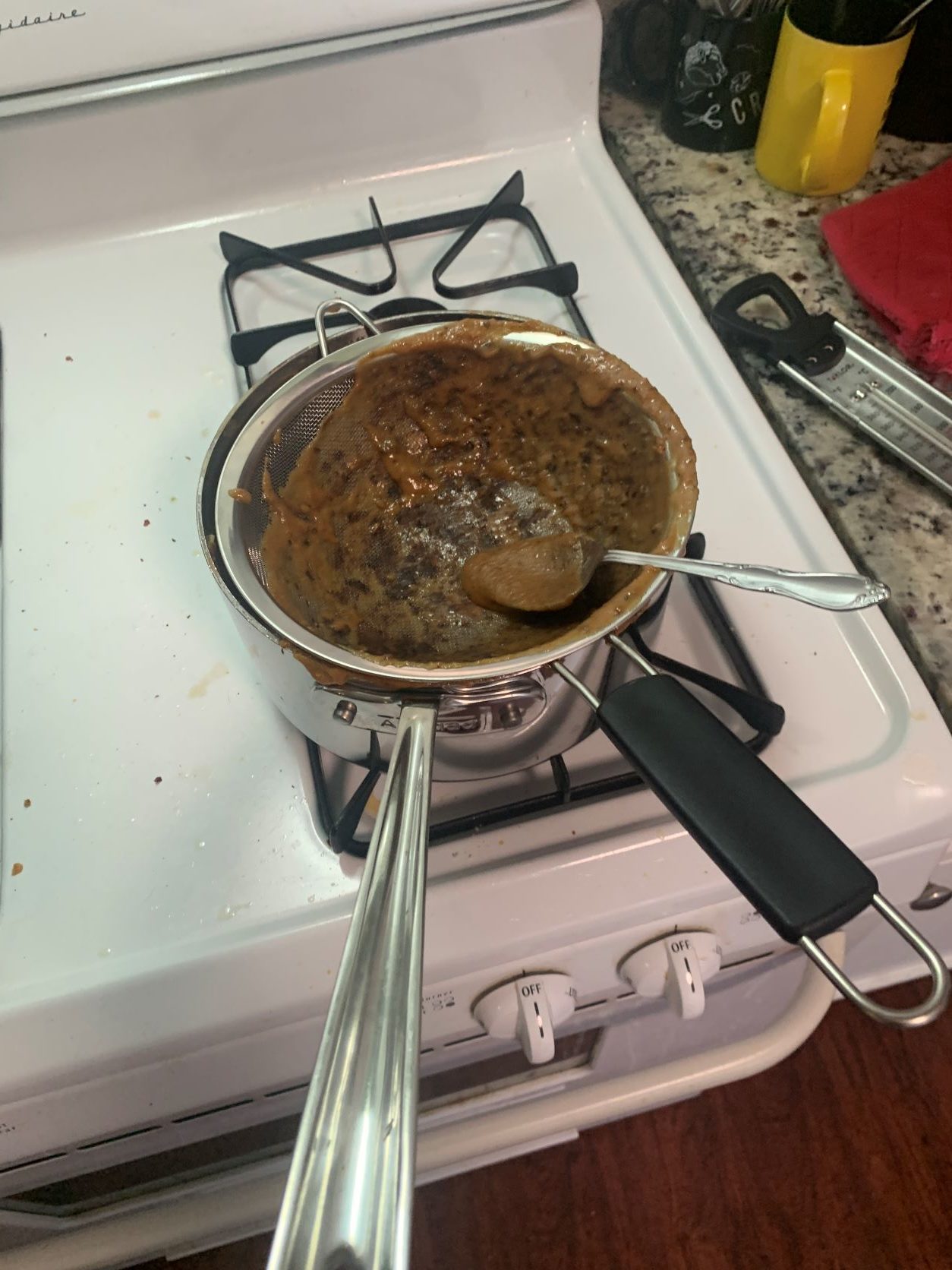
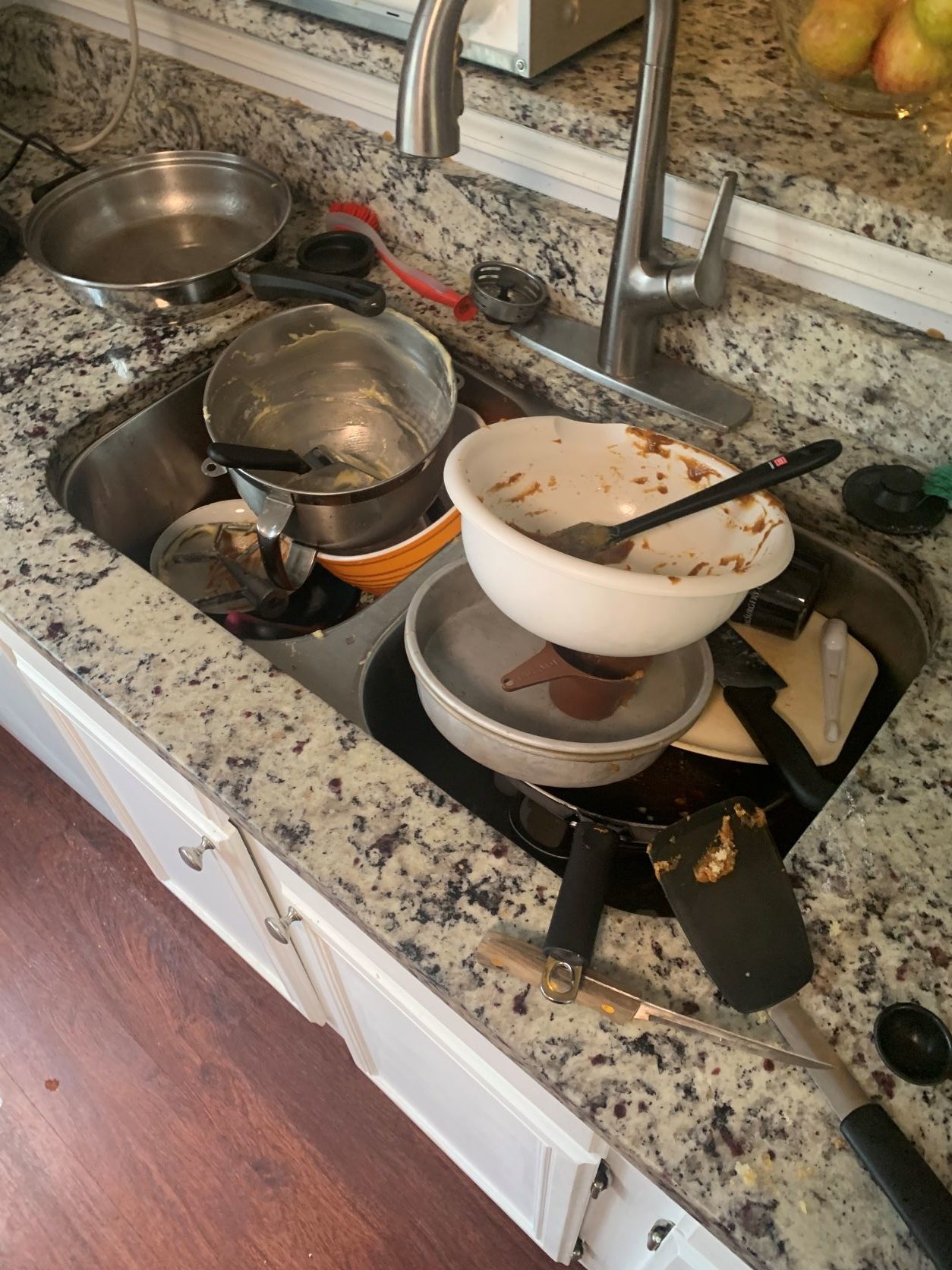
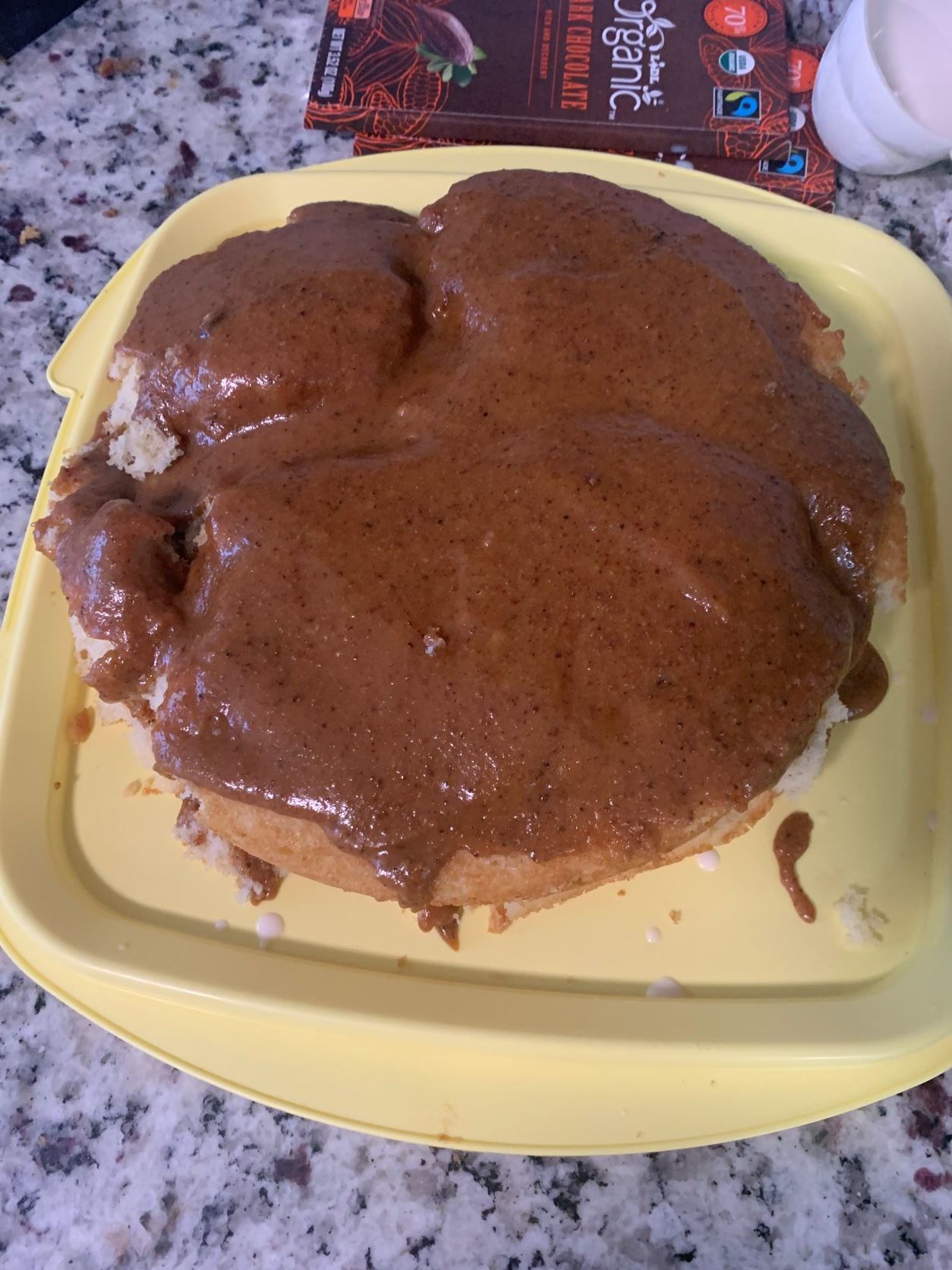
So, I was pretty upset.

I was so disheartened. My kitchen was a wreck. My cake was even worse shape. And I didn’t know how to salvage this monstrosity. That’s when Dale said (between laughter at my cake-based trauma) that I should turn them into cake pops.
Now there’s an idea. I had never made cake pops, but I had left over skewers that I could cut in thirds and a cake I would never serve, so why not? If they sucked, I could chunk them, no harm no foul. So I scooped the cake into a bowl, squished it altogether, and rolled them into rough balls. The cake made 28 cake pops, which I stuck in the fridge. Later, I’d coat them with some dark chocolate I had lying around and some leftover sprinkles from Shavuot a few years ago. They’re very sweet (aren’t all cake pops?), but totally serve-able.
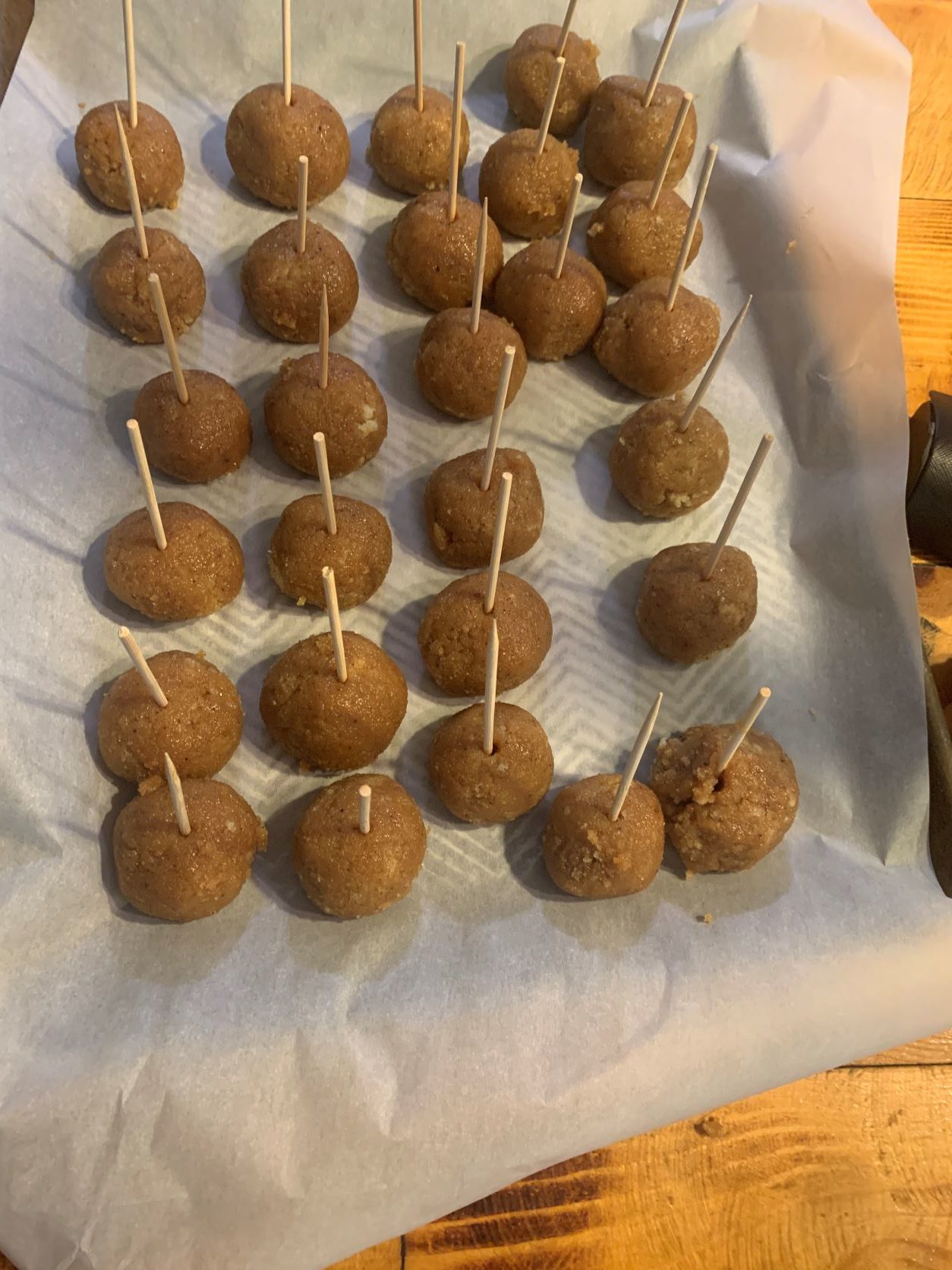
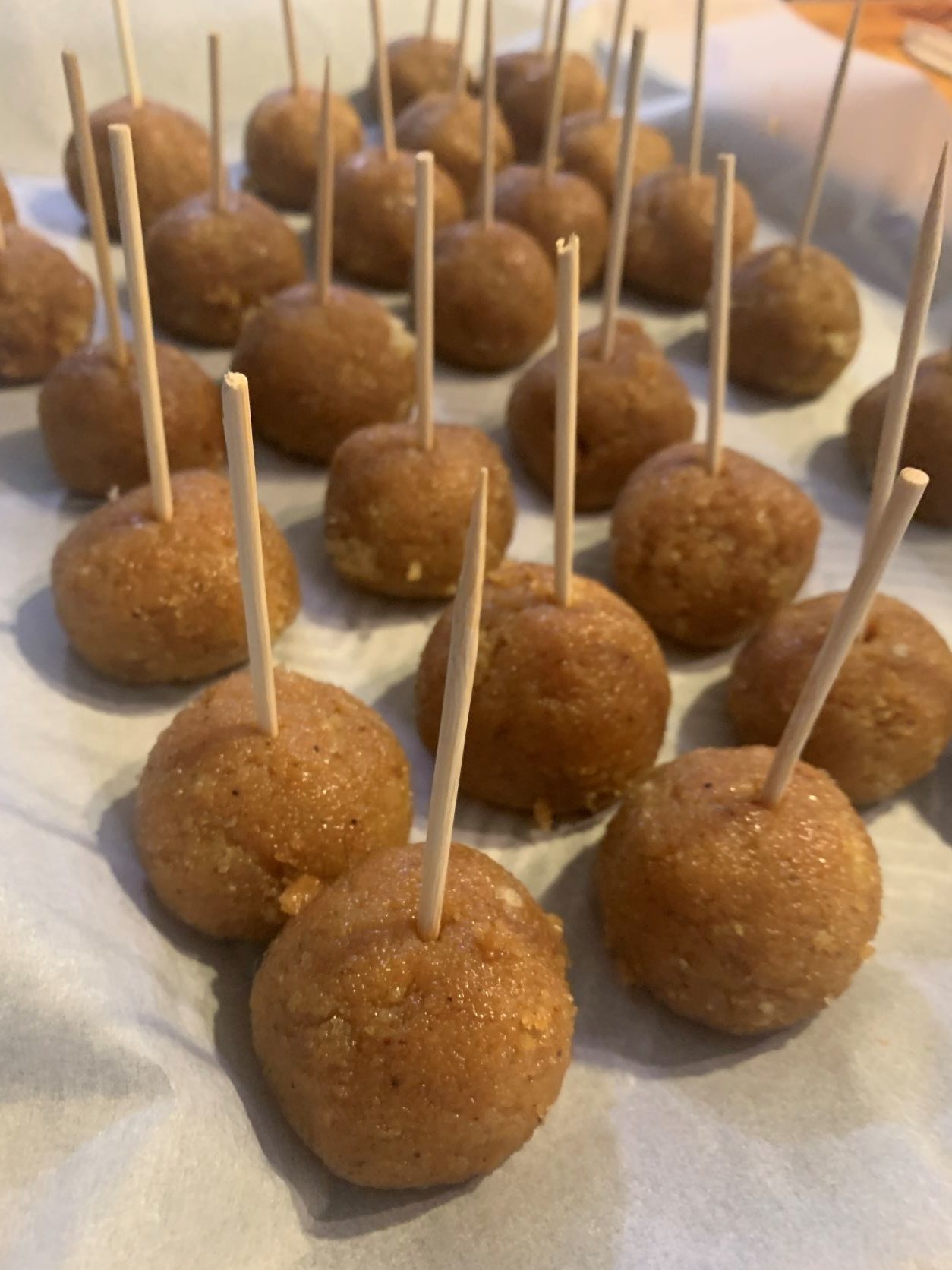
Now, I am not above being beaten by a cake. I have made things, had a bite, and thrown them in the trash. But I can make caramel cake. I have done it before. But I just had followed the path of a recipe that led me astray and not onto the path of righteousness. I needed someone stalwart. Someone proven. Someone virtuous to bring me out of this baking funk.

King Arthur Flour is my go to baking resource. Their website rules, their products are great, their recipes are clear and tested, and they’re employee-owned. What more could you want? I mean, they are out of Vermont, but that’s totally south of lots of places (in Canada…), so maybe they could help me out.
And I wasn’t so set on a traditional Southern caramel cake anymore. I just wanted a cake that was caramel. So I went with their Caramel Cake recipe. They’re short on descriptions, but their riff on the classic Southern cake uses caramel throughout the cake (not just in the icing) and a more reliable brown butter icing for a more consistent result than the typical caramel frosting found in Southern cakes. A cheat, but it had been a long afternoon, and I still had a second caramel to make.
This was another yellow style cake, but this time, instead of making a straight caramel, I made a caramel syrup that was combined into the cake, the frosting, and drizzled over the cake. It made for a very caramel-y tasting cake that was rich, sweet, earthy, and very satisfying. I think this might be my favorite cake I’ve made so far. It was well worth the hassle to get here.
Is this a true Southern caramel cake? No. It lacks the crunch of the icing that is key to that. But I’d argue that’s more a difference of technicality than taste. I’ll definitely try a caramel icing again (with a different recipe, jaysus chreesto), maybe in a mini-layer cake as we head into the fall. But for now, I’m counting this adventure in cake a success. I mean, with Southern cake expedition resulted in two cakes. Two cakes! Damn, Southerners eat too much cake.
